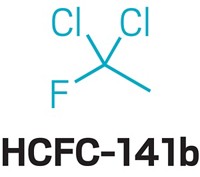Advertisement
Grab your lab coat. Let's get started
Welcome!
Welcome!
Create an account below to get 6 C&EN articles per month, receive newsletters and more - all free.
It seems this is your first time logging in online. Please enter the following information to continue.
As an ACS member you automatically get access to this site. All we need is few more details to create your reading experience.
Not you? Sign in with a different account.
Not you? Sign in with a different account.
ERROR 1
ERROR 1
ERROR 2
ERROR 2
ERROR 2
ERROR 2
ERROR 2
Password and Confirm password must match.
If you have an ACS member number, please enter it here so we can link this account to your membership. (optional)
ERROR 2
ACS values your privacy. By submitting your information, you are gaining access to C&EN and subscribing to our weekly newsletter. We use the information you provide to make your reading experience better, and we will never sell your data to third party members.
Environment
Ozone-Depleting Compounds On Decline In Atmosphere
Atmospheric Chemistry: Concentrations of two hydrochlorofluorocarbon compounds peaked around 2012
by Jyllian Kemsley
October 19, 2015
| A version of this story appeared in
Volume 93, Issue 41
Chlorofluorocarbons and hydrochlorofluorocarbons (HCFCs) are valued as refrigerants and propellants. When they are released to the atmosphere, however, they destroy Earth’s protective ozone layer. Although an international treaty controls the use of such compounds, a study last year indicated that concentrations of some of them continued to increase through 2012. Follow-up measurements now indicate that concentrations of two HCFCs, CH2ClF and CF3CH2Cl, peaked around 2012 and have since steeply declined, with emissions dropping by as much as 50% in three years (Geophys. Res. Lett. 2015, DOI: 10.1002/2015gl064709 and 10.1002/2015gl065846). The compounds were studied by international teams led by Fabian Schoenenberger and Martin K. Vollmer of the Swiss Federal Laboratories for Materials Science & Technology. CH2ClF has been used to a limited extent in refrigerant blends, and CF3CH2Cl has no known industrial use. The researchers propose that the compounds are most likely produced and emitted as intermediates or by-products of manufacturing HCFCs and that the decrease is probably due to a change in the processes that make those HCFCs. Emissions from other sources would be unlikely to show the observed steep decline.





Join the conversation
Contact the reporter
Submit a Letter to the Editor for publication
Engage with us on Twitter